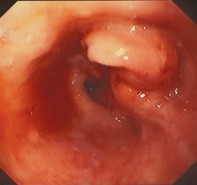Peer Reviewed
Feature Article Gastroenterology
Oesophageal cancer: diagnostic, therapeutic and preventive strategies
Abstract
While the incidence of oesophageal squamous cell carcinoma has declined in western societies, that of oesophageal adenocarcinoma has been rising rapidly in the past 30 years. The prognosis is poor once the patient presents with symptoms. Prevention and early diagnosis and treatment are the best ways to improve outcome.
Key Points
- The incidence of oesophageal adenocarcinoma has increased over the past three decades.
- Tobacco smoking and excessive alcohol are important risk factors for squamous cell carcinoma. Longstanding severe gastro-oesophageal reflux and obesity increase the risk of oesophageal adenocarcinoma.
- Identification of risk factors may lead to prevention or early diagnosis and treatment.
- Prognosis of both oesophageal squamous cell carcinoma and adenocarcinoma is poor because generally the cancer is advanced when found.
- Further studies are required to assess whether endoscopic screening and surveillance will lead to improved morbidity and mortality in patients with adenocarcinoma related to Barrett’s oesophagus.
Purchase the PDF version of this article
Already a subscriber? Login here.

